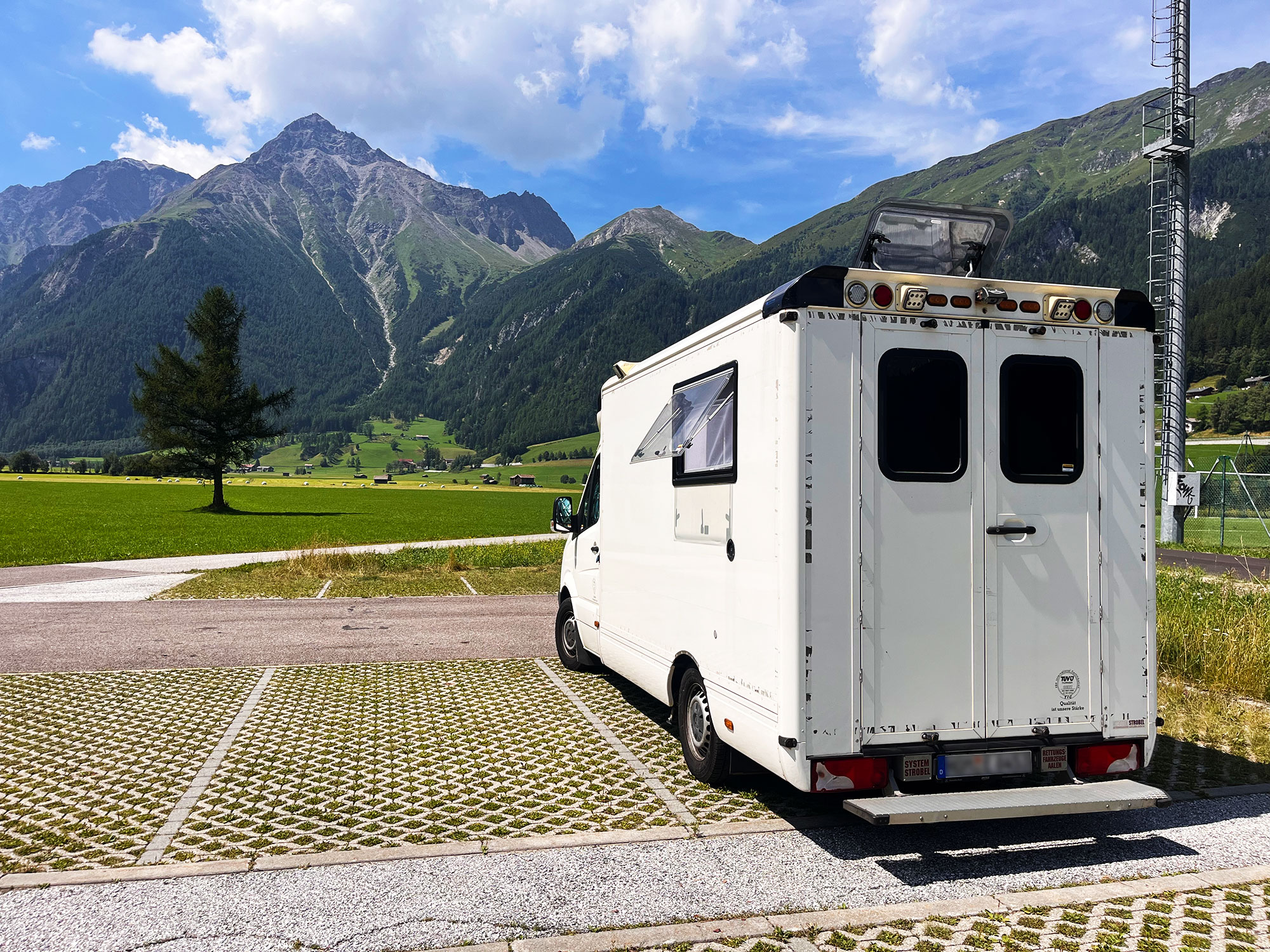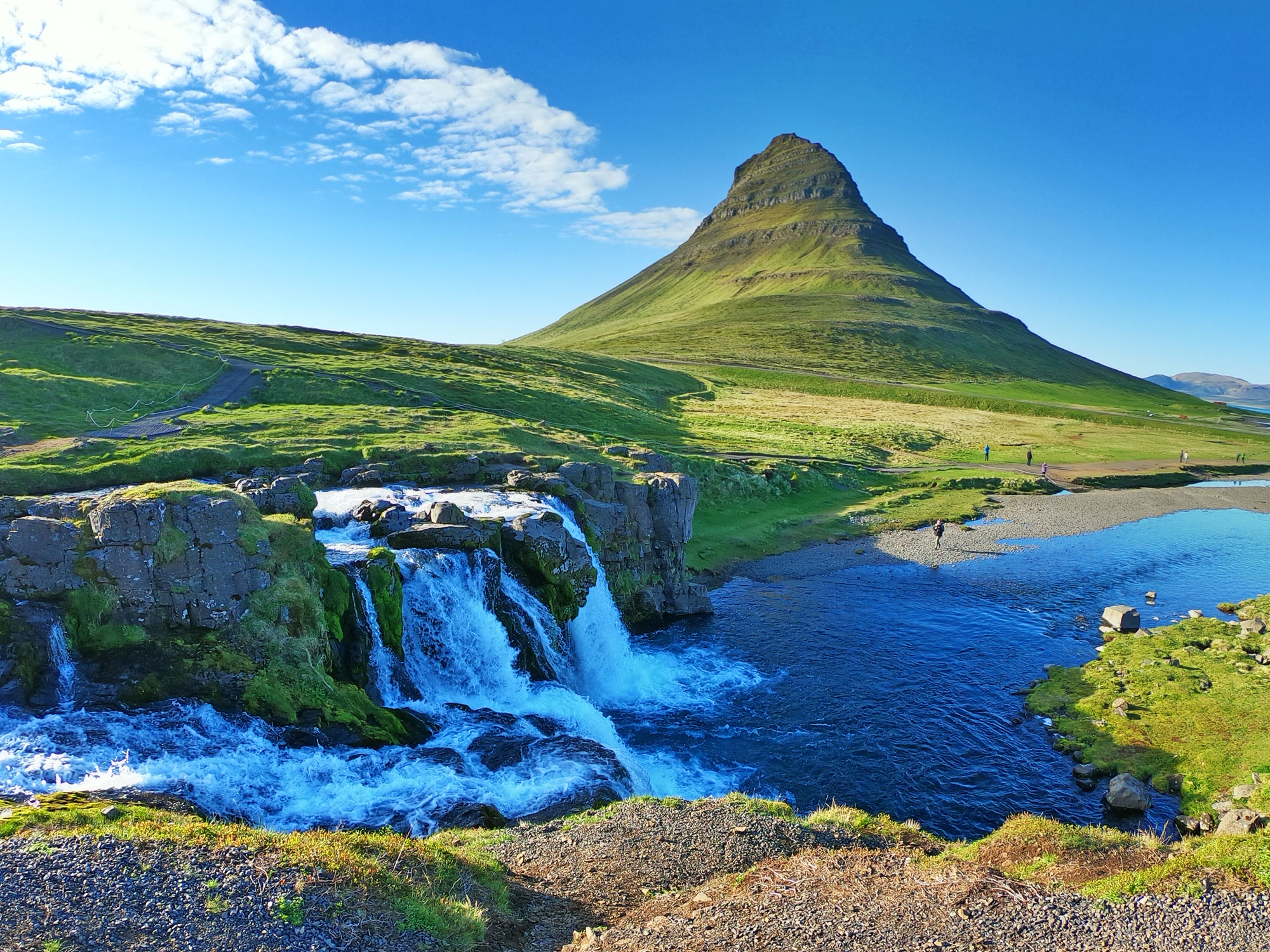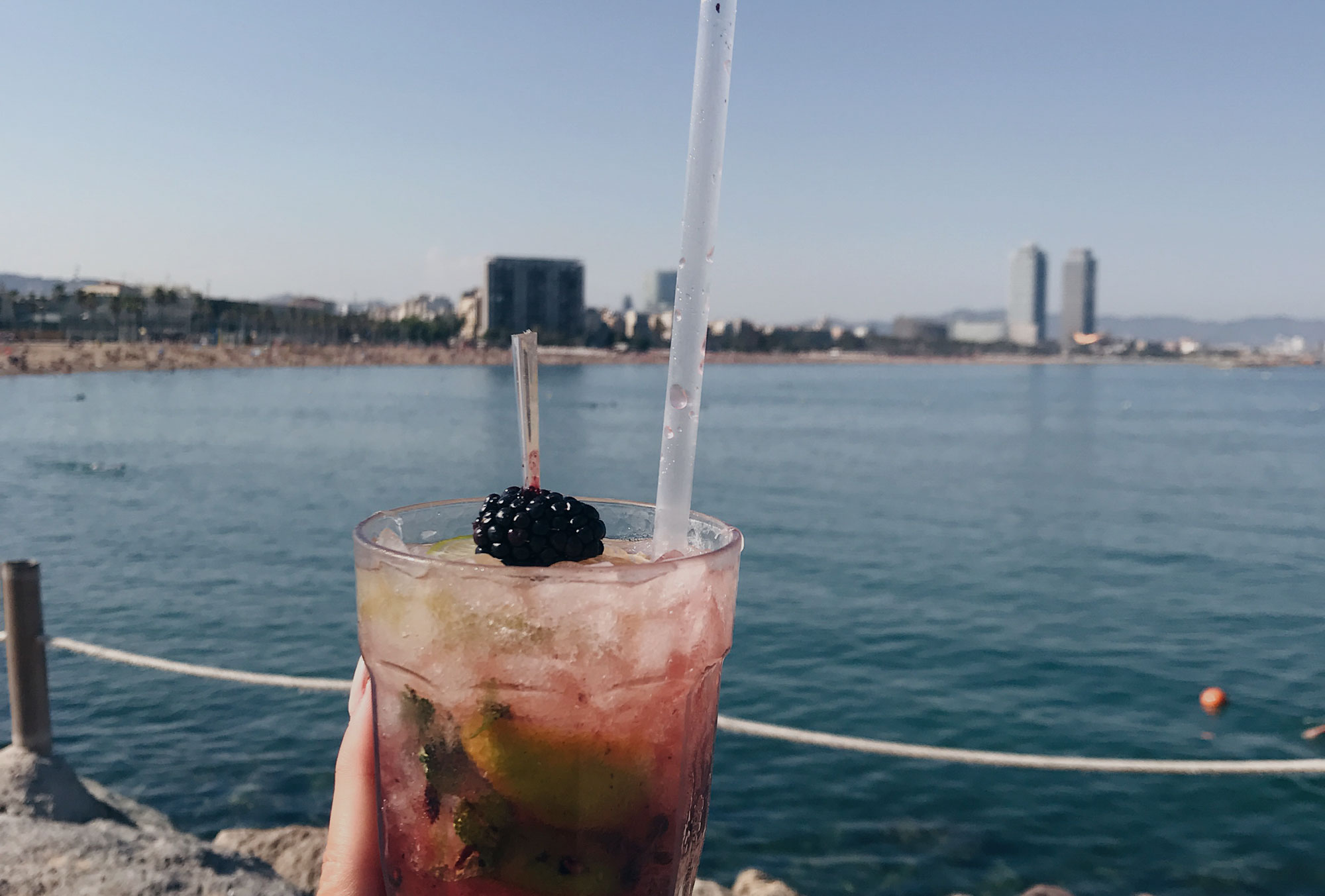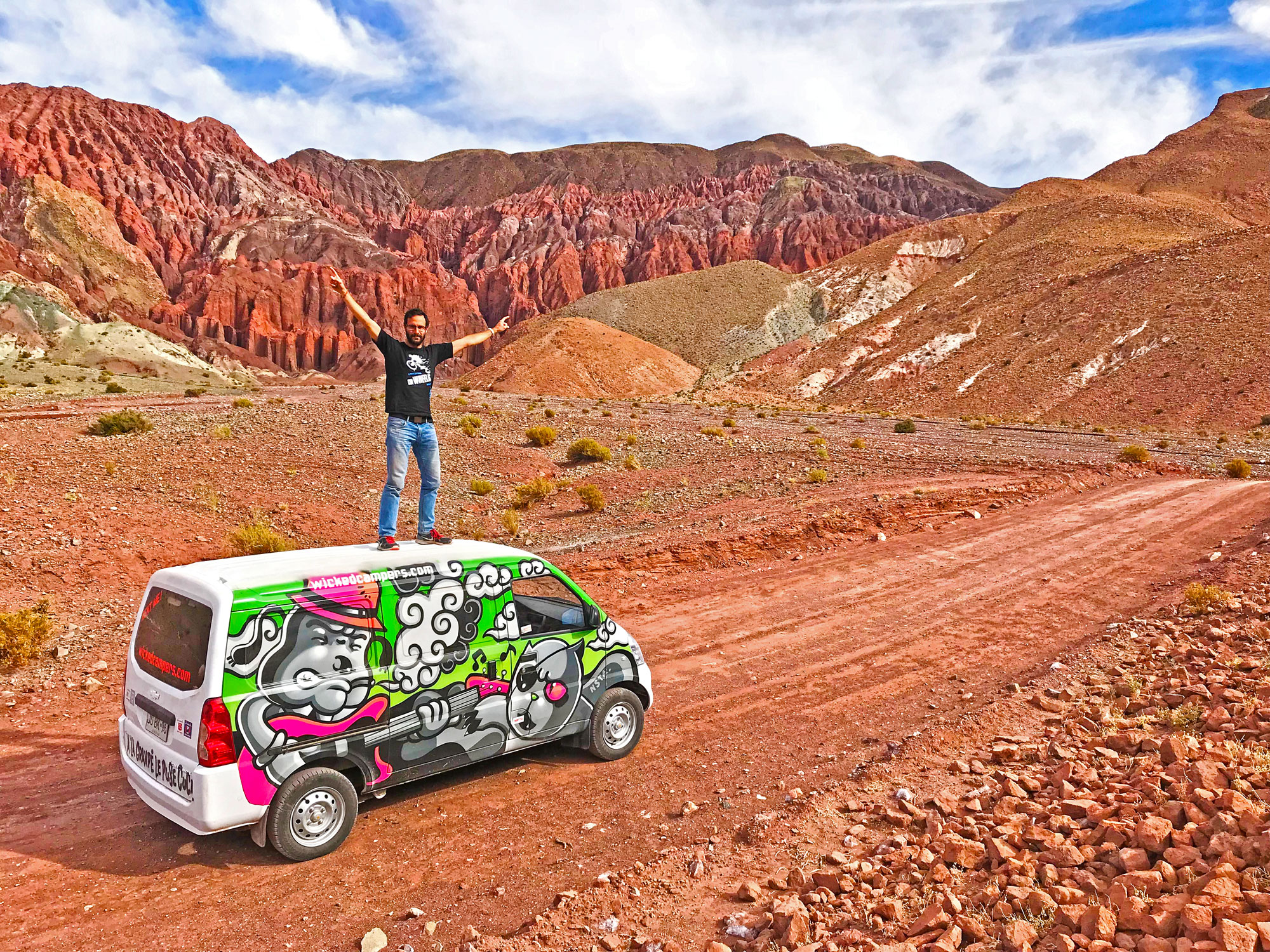Two weeks into our Van Life and we’re still loving it. Thank goodness, considering the huge investment we made to buy and customize our campervan! Unfortunately, we picked the worst time to visit South Tyrol: the first two weeks of August. Popular spots in the Dolomites are a nightmare of overcrowding right now. Finding parking is nearly impossible, even if you’re willing to pay, and the prices aren’t exactly cheap. To avoid going crazy and stressing out too much, we’ve decided to seek out quieter destinations, away from the major tourist hotspots. Sure, we’re missing out on some of the big highlights, but that’s just part of van life, I guess, especially during peak season.
Why not?
We’d been thinking about buying a campervan ever since the day my girlfriend, Eva, casually asked: “What do you think about living in a campervan?” We’d already been traveling and working remotely as digital nomads for a while, but we were getting tired of the constant hunt for new apartments every time we moved to a different place.
“Sure, why not?” I responded as if she’d just asked me if I was hungry. It wasn’t the first time I’d said yes to one of her wild ideas. We started researching all the options, debating whether we should convert a van ourselves, pay someone to customize it to our liking or buy one that was already converted.
Many months later, in January 2024, we ended up buying an already converted campervan. We weren’t even actively searching anymore—it just sort of appeared, and we decided on the spot to buy it, even though the camper was in northern Germany and we were in the Canary Islands!
It wasn’t cheap, but it had nearly everything we needed to live in it full-time: a powerful battery, good solar panels, heating for both air and water, a shower and toilet, a kitchen, and most importantly, a big bed where we could sleep comfortably. Since it was a former ambulance, we named it Lance!
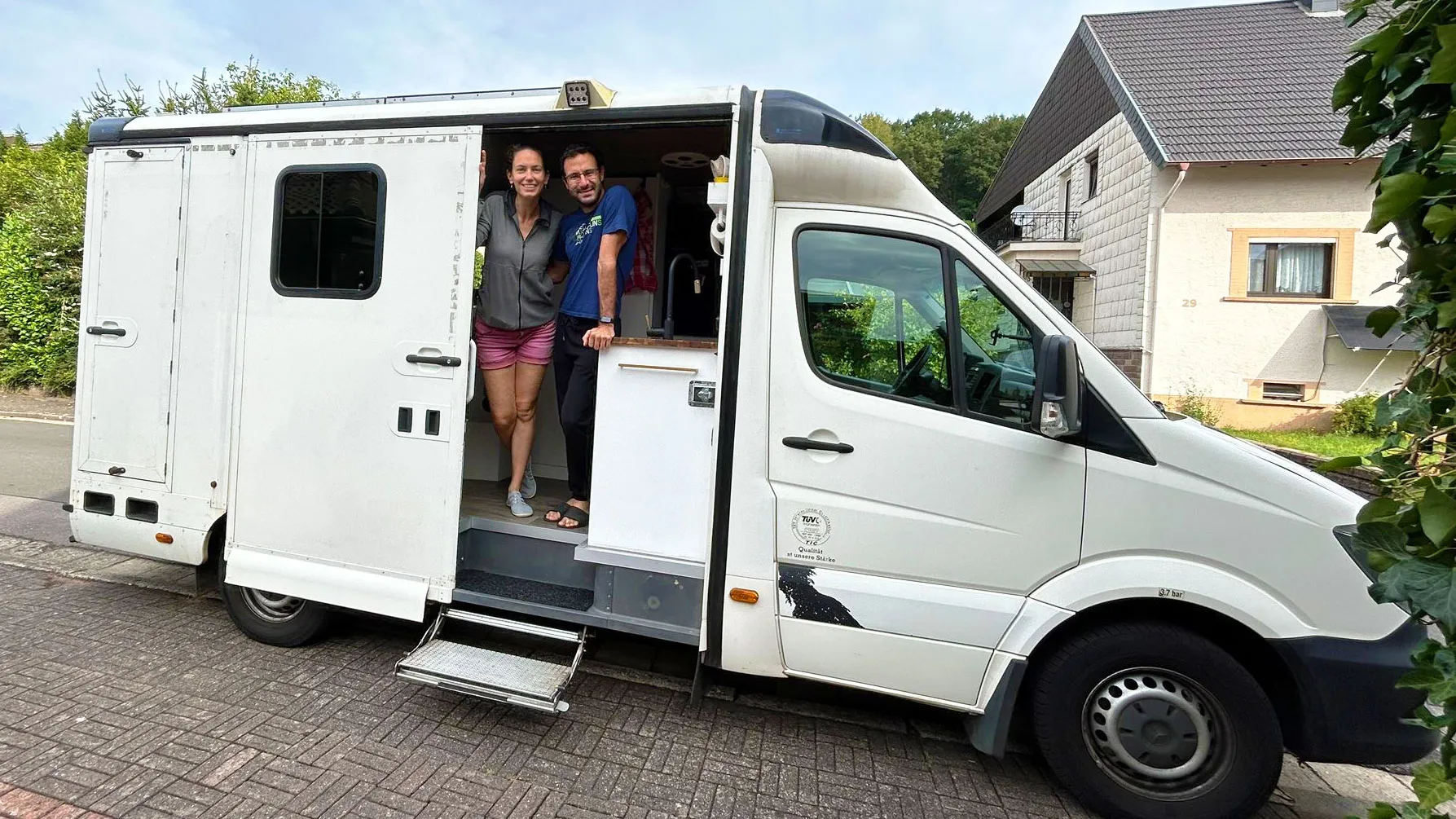
Being summer people, we decided to kick off our new adventure in the warmer months. The plan was to start in northern Italy and gradually make our way south, aiming to reach Sicily by November and December, where the weather would hopefully still be pleasant. After exploring Eva’s country, Germany, many times, I wanted to show her mine and give her a deeper understanding of Italian culture. But, in reality, our itinerary is turning out to be quite different from what I had envisioned a few months ago when I was planning our journey.
Where do we park tonight?
“We’ll start by exploring the Dolomites, doing lots of hiking,” I told her. “We’ll visit the most beautiful places and then head to the big cities of Veneto: Venice, Padua, Verona…”
But there were two small details I overlooked: first, I hadn’t considered that in August we wouldn’t be the only ones wanting to visit the most famous places in South Tyrol, especially during the central high season week. Second, visiting a large city in a camper is not really a good idea, because finding a place to park for the night is always quite difficult, regardless of the season. Plus, there’s the risk of having the camper broken into and our valuables stolen, if not the camper itself! In fact, reading posts on various Facebook groups, Italy’s big cities are notorious for thefts involving campers, with Pisa and Rome leading the list.
Aside from security, there’s the issue of parking and traffic. When we were deciding which camper to buy, we opted for a vehicle large enough to live in full-time but not so large that it would be impossible to find parking. In the end, the camper we bought is 6.20 meters long, a size that seemed optimal, until we found ourselves looking for parking in small villages where we stopped to visit some friends. The problem is that most roadside parking spaces are not large enough for our camper, which has a significant rear and front overhang. So, parking in villages or cities is not always easy, unless we find a large parking area specifically for campers. Also, driving in cities or small towns is not ideal given our size. Being on narrow and tight streets is not fun at all.
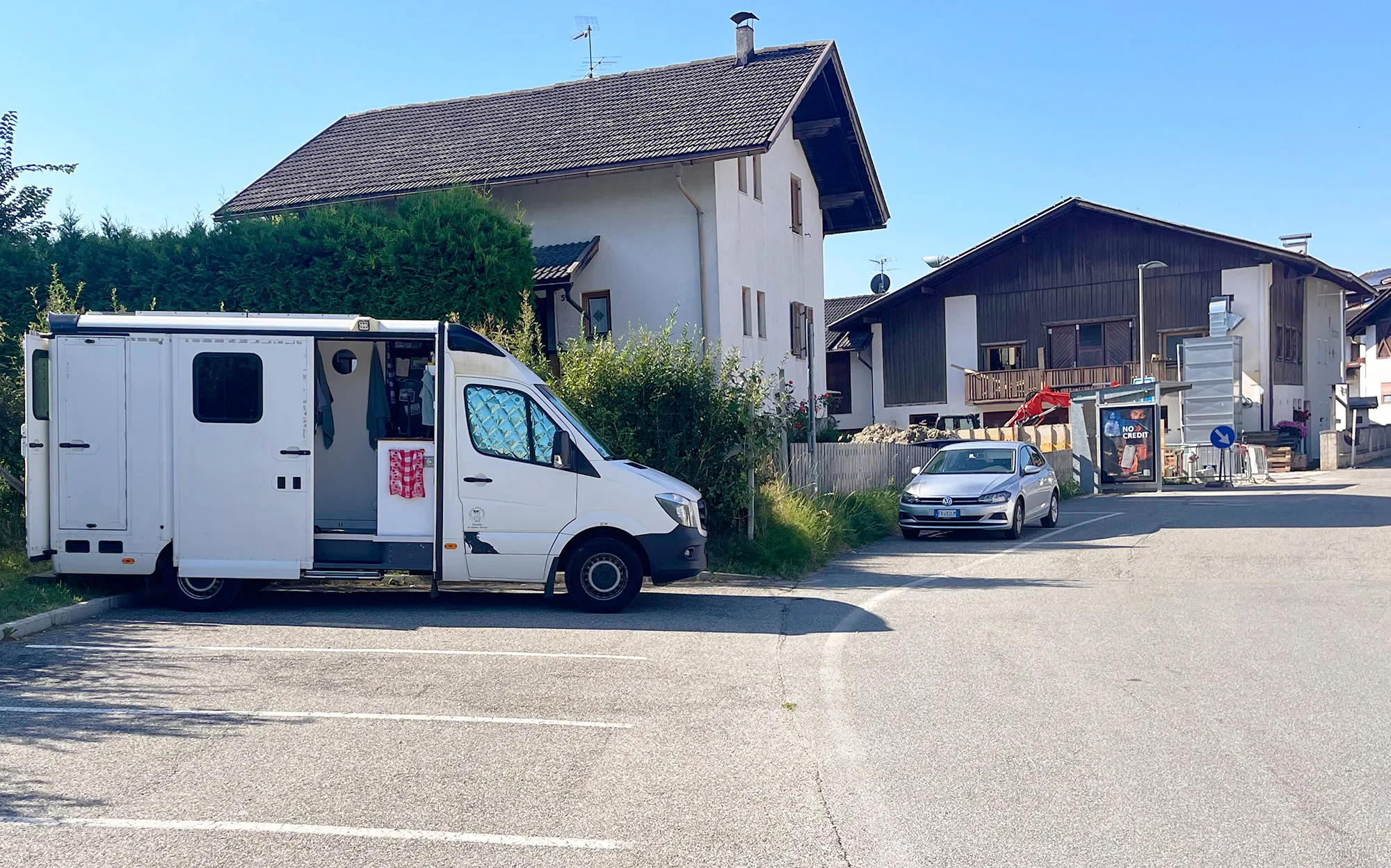
Another reason to avoid spending the night in the center of villages or cities is that it has been discouraged by more experienced camper owners. Parking in a residential area or near someone’s house is not well-regarded. Not that it’s illegal, mind you. There are no official rules in Italy regarding overnight stays in campers; there’s only a gray area that everyone takes advantage of: if a driver feels unable to continue driving due to tiredness or other reasons that might compromise safety, they are allowed to stop and rest, even to sleep in their vehicle. This is considered responsible behavior and is encouraged to prevent road accidents. In this context, the driver can stop in a rest area, a public parking lot, or a service area along highways. In these situations, it is not considered camping, but merely a necessary rest for safety.
According to Article 185 of the Italian Road Code, camper parking is equivalent to car parking, as long as the vehicle does not extend beyond the camper’s profile (i.e., without protruding with doors, windows, ladders, awnings, etc.), otherwise, it is considered camping. So, we are free to park day and night in any parking lot, sleep, eat, work, and do whatever we want in the camper, as long as we don’t put out tables or chairs. We don’t have awnings, and the sliding door of our campervan hardly protrudes from the vehicle’s profile, so it’s not an issue to open it.
Online, we often read about other campers who have been woken up by the police at 7 in the morning, telling them to close the awning or even remove the wheel chocks, those used to stabilize the camper when the ground is not perfectly level. In general, though, they tend to just issue a warning without fines.
Another general tip is not to stay in the same parking spot for more than one night because then it’s clear that we are not just resting before getting back on the road. For this reason, as I mentioned, it’s better to avoid parking near inhabited areas, as residents are usually not very happy to have new neighbors and might alert the police, especially if we don’t leave first thing the next morning.
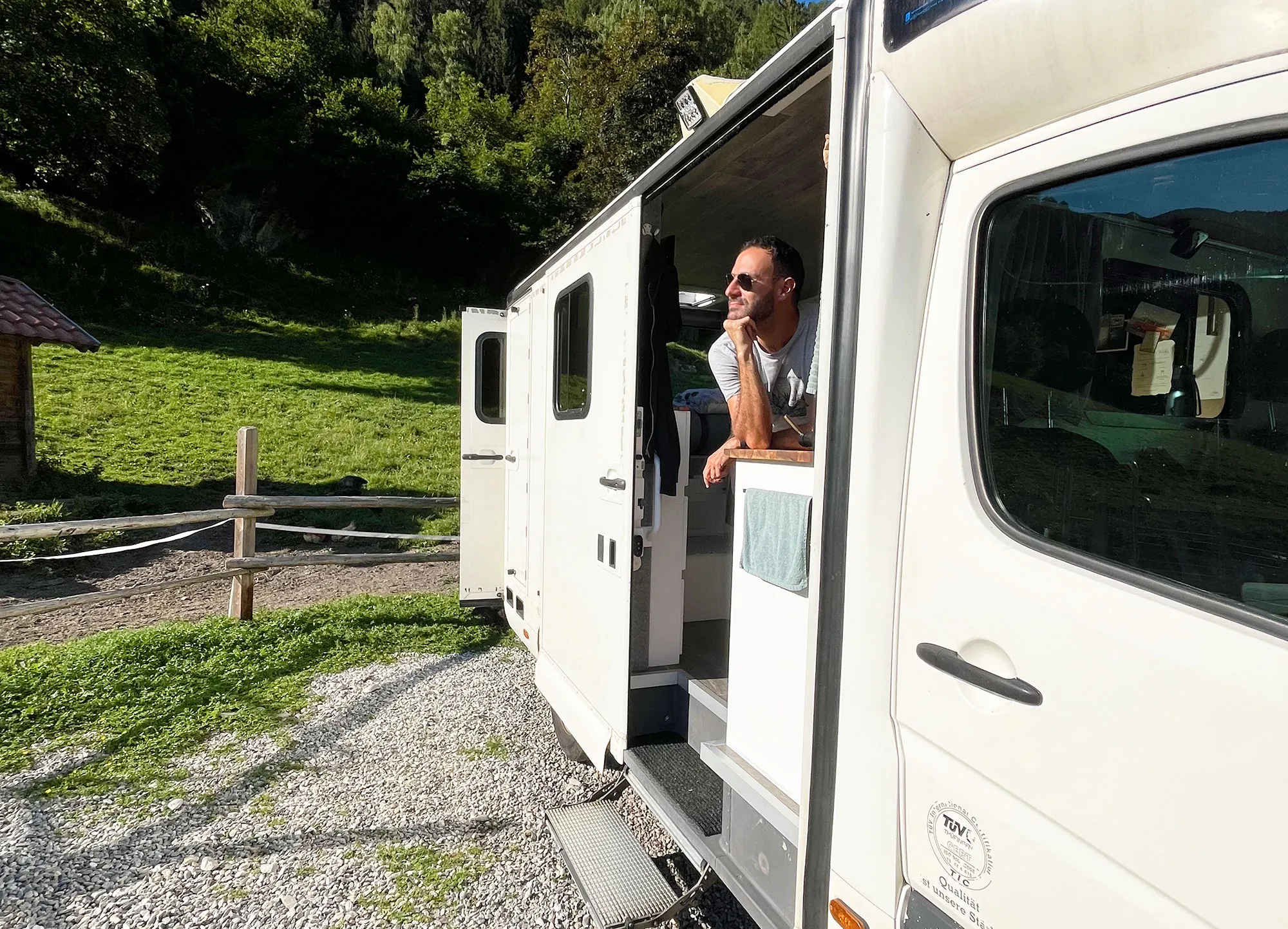
One of the main disappointments so far has been discovering that so-called “wild camping” is illegal in Italy, meaning parking in nature rather than in official parking areas. For example, in a clearing in the forest or by the shores of a lake. I had imagined waking up, opening the camper doors, and admiring breathtaking views in the morning. Especially in South Tyrol, they seem to be particularly strict with fines ranging from 500 to 2000 euros, so for now, we stick to free parking areas where parking and overnight stays are allowed. We don’t want to run into problems right at the start of our trip! However, as we head towards central and southern Italy, we’ll consider testing our luck and trying some hidden nature parking spots. We’re certainly not the first or last to do so! And maybe we’ll get by with just a simple warning from the police.
Of course, the legal way to camp in nature is to find a nice campsite in the mountains, for example, or by the shore of a lake. It’s a pity that, especially in high season, the prices are outrageous: 60-80 euros per night! I understand if one is on vacation for a week or two, but when you’re doing it full time like us, spending even just 30 euros a day for a campsite adds up to almost 1000 euros a month. It’s almost better to rent an apartment!
So far, we’ve always managed to find free parking spots with pretty views and surroundings, where we can stay one or two nights without anyone saying anything. We use an app called Park4Night, where other campers report parking areas and rest spots where they have slept, with reviews and ratings. It’s the most famous and used, so it’s really easy to find good free spots to spend the night and day.
The only exceptions where we’ve paid were by choice. There’s another app, Agricamper, that lists agritourisms or farms where you can spend a night in exchange for buying products or eating there. The first weekend, we wanted to feel on vacation, so we parked in the spacious courtyard of a farm near Vipiteno. Upon waking, chickens were scratching around under our camper and horses were curiously watching us from the front field. The breakfast was worth all 22 euros per person: a buffet with zero-kilometer products, from freshly milked milk, butter, and homemade jams, not to mention the melt-in-your-mouth speck. We stuffed ourselves to the point of not needing lunch.
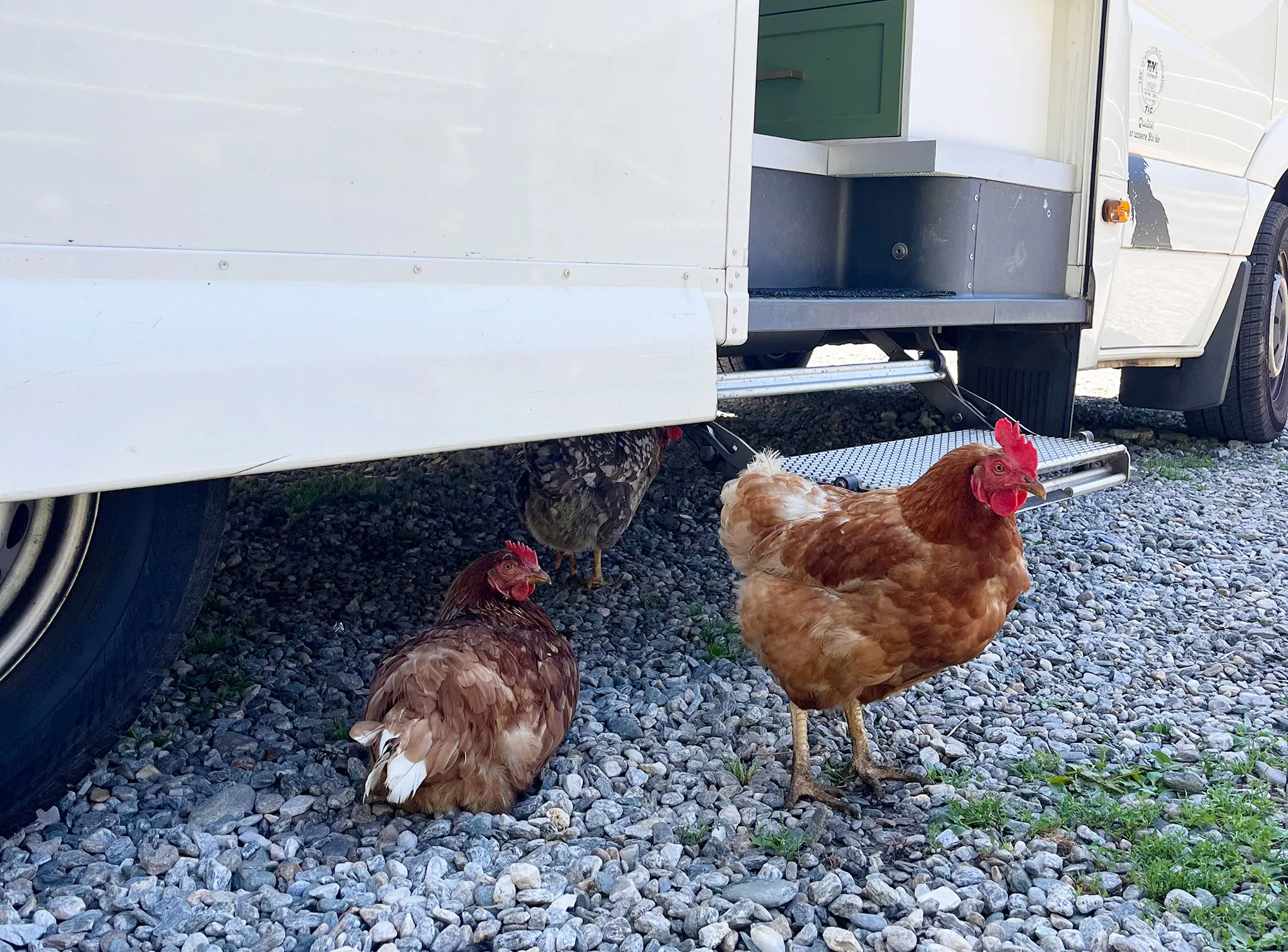
The following weekend, we found a dairy specializing in goat cheese. Spending the night there in exchange for 30 euros worth of goat products was just as we expected: a strong goat smell everywhere and the company of hundreds of flies, but compensated by the hospitality of the owners, who let us participate in the goat milking firsthand. We were able to enjoy warm goat milk straight from the teat into the glass!
We enjoyed these experiences and are glad we chose them, both for the lower cost compared to a campsite and for supporting local farmers, which seems more fair.
Good morning, sunshine!
Our morning routine is quite different from that of a typical couple living in an apartment. We wake up early, between 6:30 and 7:00 a.m; while one of us uses the bathroom and freshens up, the other starts unmaking the bed. Like in many campervans, we have a couch that transforms into a bed, but we’ve found a way to sleep comfortably and speed up the transformation process. We use a thicker, firmer mattress as the base—this is the one we sit on while working. We cut it into two L-shaped pieces. One person sits on the longer section, and the other sits at an angle on the shorter one, each with their little table. Under the longer section, there’s an extension with slats that slides out, allowing us to turn the L into a 160 x 200 cm rectangle, where we add two more sections of the mattress to complete the bed. On top of that, we lay a thinner, softer memory foam mattress, which is what we sleep on, and overall, it’s pretty comfortable! This mattress is covered with a fitted sheet that stays in place even when it’s rolled up. For sleeping, we use single duvets, typical of Germany.

The morning procedure is, of course, the reverse: after folding the two duvets, we roll up the top mattress, secure it with a strap, and push it toward the back of the van. It’s not the most aesthetically pleasing (definitely not Instagram-worthy), but it’s quick, and the roll itself can be used as a backrest when sitting. One person steps out of the van and goes to the back to grab the duvets and pillows, which are stored in a box in our “garage” under the bed. Meanwhile, the other person closes the bed extension and sets up the two swiveling tables. The whole process takes less than five minutes, so it’s not too painful to do it every day.

While one of us starts preparing breakfast, the other can use the bathroom. Space is limited, so we have to take turns. The sink serves both for washing dishes and for freshening up. It’s possible to stand side by side while one person washes their face and the other makes coffee, but the space is quite tight.
What about the bathroom?
One of the most common questions we get is: how does the bathroom work? We have a shower cabin that’s big enough to stand in comfortably, although it’s not tall enough to hang the showerhead and enjoy a hands-free shower. However, in a camper, showers need to be quick and efficient, Navy style: you wet yourself with the minimum amount of water, turn it off, soap up, and then rinse using as little water as possible. But at least we have warm water!
And the toilet? Inside the shower cabin, there’s a small door through which we pull out a wooden box with a toilet seat on top. Our toilet is a dry separation type, with a separator that divides liquids from solids. Essentially, urine goes into a large bottle in the front, and solid waste goes into a bag in a bucket, which we cover with plenty of sawdust after each use (similar to cat litter). Surprisingly, the main issue is the smell of urine if the bottle isn’t emptied after two days. The solid waste bucket, on the other hand, doesn’t cause problems, thanks to the sawdust that dries it out. Unlike chemical toilets, this separating solution is more eco-friendly and doesn’t require special disposal facilities. The waste bag can be thrown in any garbage bin, and the urine bottle can be emptied in any public restroom.
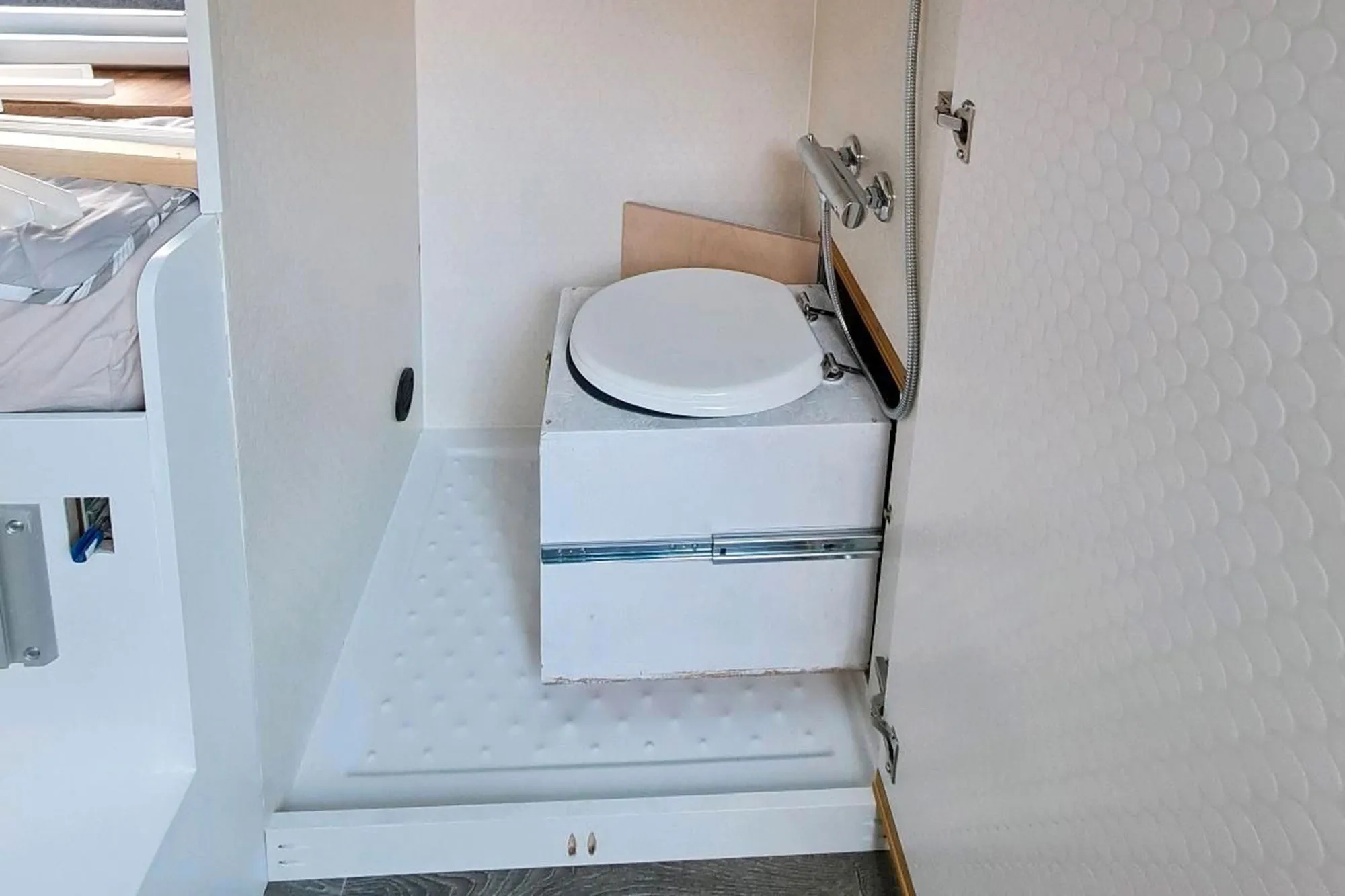
Where do we dump it?
When we were designing and imagining our Van Life, we had many doubts and concerns. One of them was about our resources: would 130 liters of fresh water be enough? And would the 300 Ah battery allow us to recharge our laptops and cook with the induction stove? To our surprise, the thing that turned out to be insufficient was something we hadn’t considered: the gray water tank.
When we bought the campervan, the previous owner had converted it according to his needs, which were to spend a couple of weeks on vacation each year. The sink and shower drained directly onto the ground through pipes running through the camper’s floor. This might have been a good solution for him, as he was wild camping, but it wasn’t ideal for us, who often park in regular parking lots. So, one of the first modifications we had to make was to add a gray water tank under the van, connecting it to the sink and shower drains. The previous owner had included a 53-liter tank in the sale, which was the perfect size to fit under the van, so we didn’t hesitate to install it.
After the first few days of our adventure, we quickly realized that 53 liters of gray water lasts us about two days. Even with very short showers and cleaning dishes with paper towels before soaping and rinsing them, by the third day, the tank is full. Where do we dump the water? You can’t just pour it down the first drain you find because they often connect directly to rivers rather than sewers. Even if we used biodegradable soap, polluting rivers with food residues, oil, and vinegar wouldn’t be great. Plus, dumping liquids in unauthorized areas is frowned upon and, in some cases, illegal. So the only solution is camper service areas. Thanks to the Park4Night app, they’re easy to find: some gas stations offer the service for free (and for a few euros, you can also refill your fresh water), or there are camper rest areas with specific zones for dumping and refilling water. Alternatively, you can ask campgrounds if, for a small fee, you can use their dumping system.
The problem is that these service areas aren’t everywhere, and sometimes they’re several kilometers away from our route. The other day, for example, our gray water tank was nearly full, and we had to pay 10 euros to dump it at a paid camper parking lot because it was the only one available in the area. Ten euros just to get rid of our dirty water! I admit, we were tempted to just empty it in the first drain we found.
So yes, living in a camper means being mindful of the resources you use. Although we expected to have to reduce our water consumption, considering that 130 liters isn’t much, in reality, the water could last us up to five days. The real challenge is minimizing gray water since it’s not that easy to dispose of. Another trick we’ve found is to collect the water used to wash fruit in a basin and dump it in a field when no one’s watching, or reuse it to wash dishes.
Before starting this adventure, our main concern was not having enough battery capacity. You can find guides online that explain how to calculate the minimum daily energy needs by listing all the devices and their usage time. My calculations were always disastrous, especially because of the induction stove already installed in the camper. In reality, thanks to our excellent solar panels and the long sunny summer days, we never end the day with less than 70% battery charge, which easily reaches 100% during the day, especially if we drive for at least half an hour (when the engine is running, it also charges our leisure battery). However, we haven’t cooked as much as we planned, often opting for simple meals like salads, bread, cheese, and cold cuts. On the few occasions we did cook pasta or soup, the induction stove only used about 10% of the battery—nothing that a bit of sunlight couldn’t recharge.
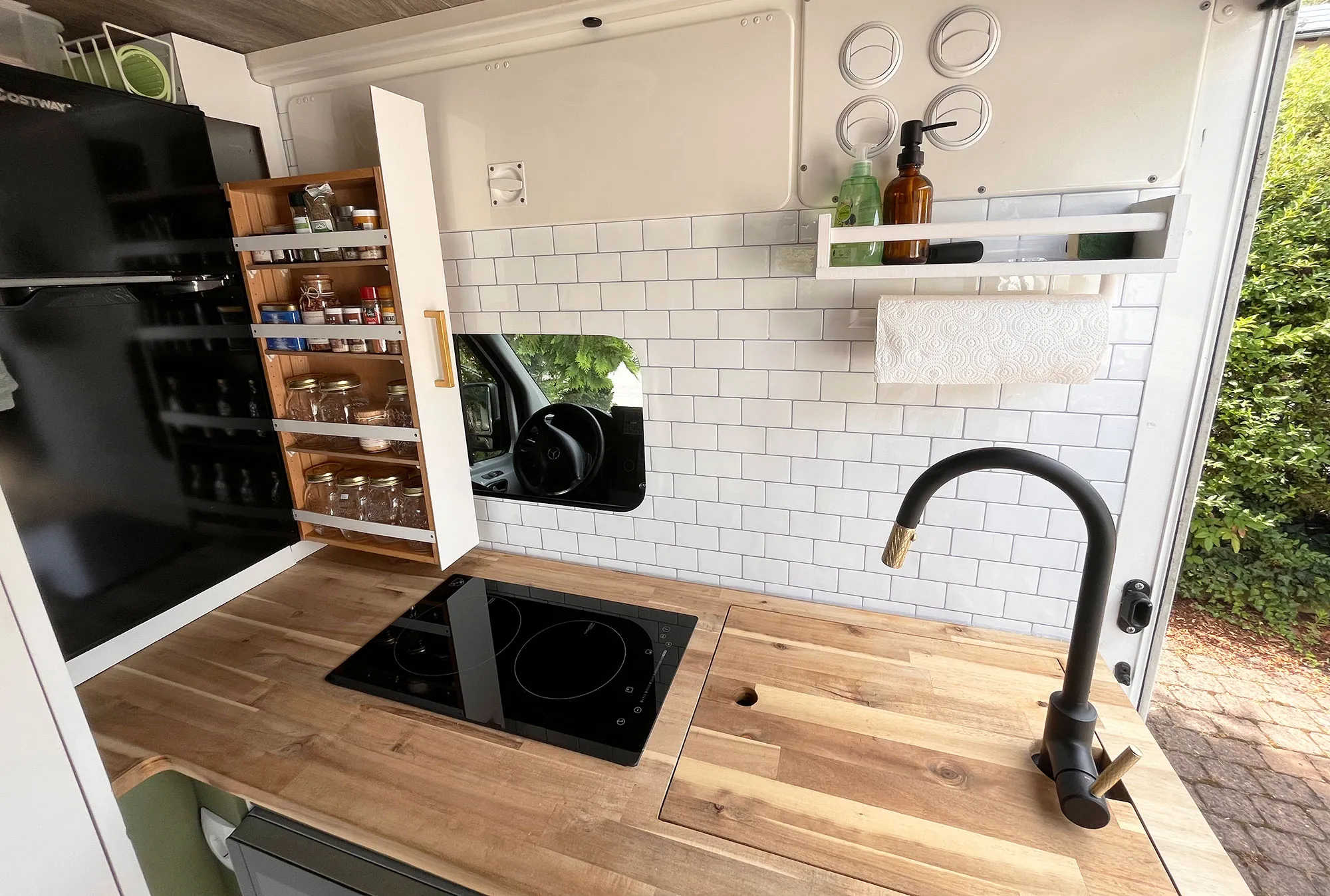
As for the Internet, we haven’t had any problems so far either: we have an excellent router with an Italian SIM card that gives us 600 GB per month! That should be enough, right? Maybe we haven’t been to very remote places yet, but so far, the connection has worked well, except perhaps at the goat farm, where we had to use external antennas to improve reception.
Stay active
We usually work about six hours a day, from 7:00 AM to 1:00 PM, sitting on our comfy mattresses, each with our little table. After lunch (and after doing the dishes), we like to explore the area, taking long walks or hikes, depending on the location. We generally choose parking spots near natural areas with forest trails, mountain walks, or particular points of interest like waterfalls or natural monuments. Sometimes we park at a swimming pool, giving us the chance to get some extra exercise and enjoy a nice, long shower!
If we’re already on the second day in the same spot (or if we only stay for one), after work, we move on to the next destination, usually about half an hour or at most an hour away. We park and, once settled, we dive into exploring.
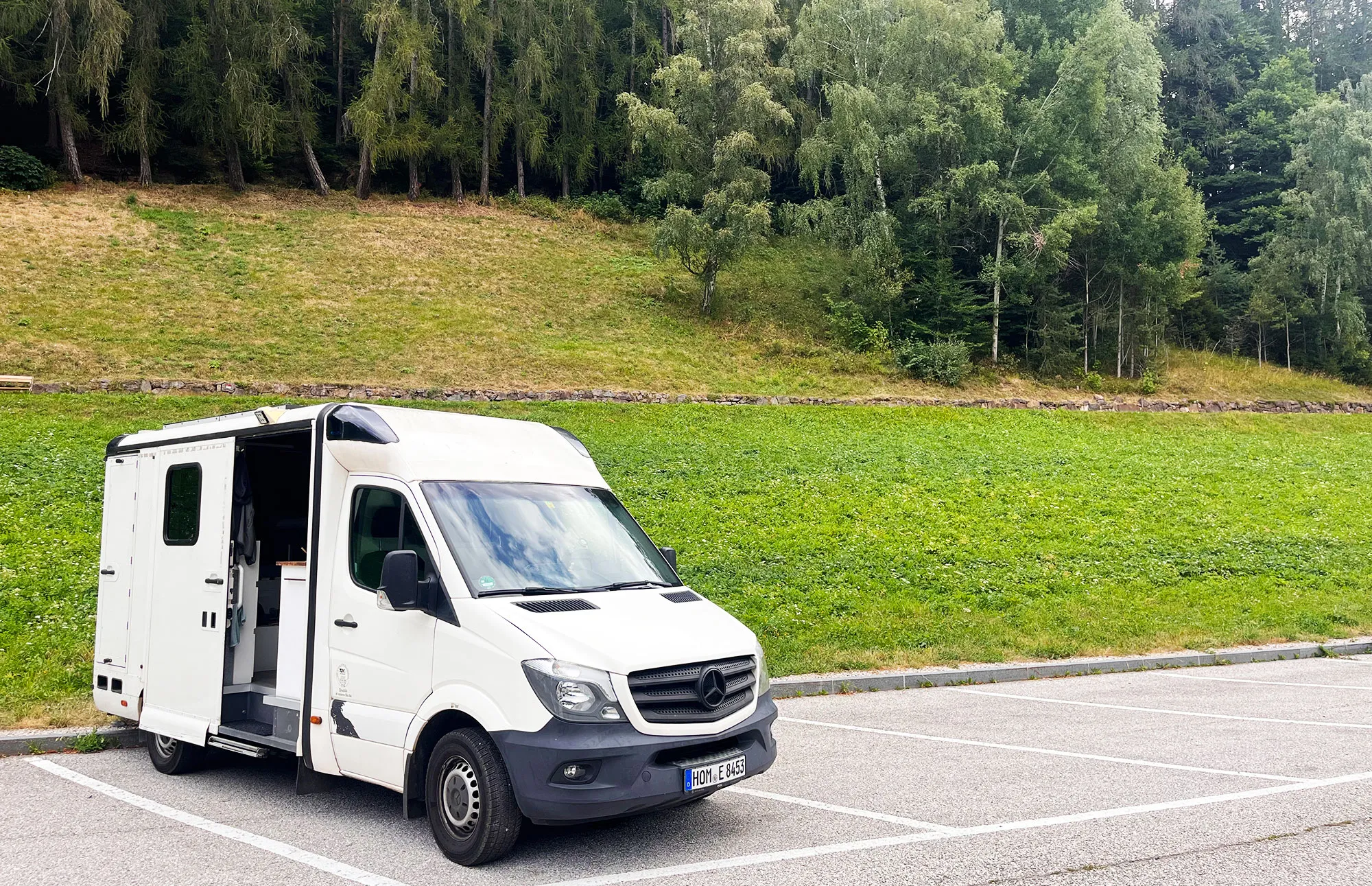
We have dinner early and are usually in bed by 10:00 PM, unless there’s a local event. For example, the other day, we parked just outside the small village of Naz in the province of Bolzano because I found out online that there was a Polenta Festival! It was an evening of live music (Italian and German classics), beers, wines, and, above all, delicious polenta with goulash! It may not be a typical dish of South Tyrol, but it was definitely worth it.
Even though every aspect of van life is more complex than regular home life, we’re enjoying this new adventure that allows us to stay close to nature and live outdoors. There will certainly be new challenges and complications, but I’m confident that we’ll be able to face and solve them!
 Nomad Life
Nomad Life